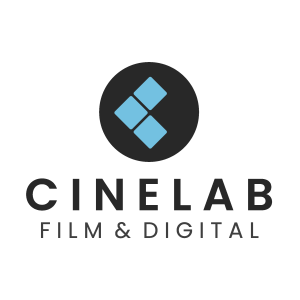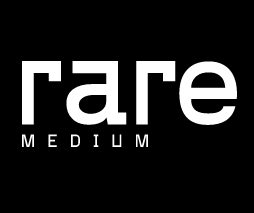
“Epic Scale”: How a Beautiful 65mm Film Transported Audiences to Abu Dhabi

Travel is a tactile experience. When you’re in a new place, seeing is only part of the full picture. It’s also the touch of unfamiliar surfaces, a trace of the unknown in the aromas surrounding you, and the engrossing noises that immerse you in somewhere utterly new. That’s a full sensory experience that travel films strive to give us, and it’s an ambition which led Abu Dhabi’s Department of Culture and Tourism to a unique stylistic choice in its latest ad: 65mm film.
In one of the only ads to ever have been shot using 65mm, ‘Find Your Pace’ is a kinetic, joyful, and sprawling depiction of adventure in Abu Dhabi. Leaning into beautiful and iconic landmarks - some of which having never previously been put to film - the ad takes viewers as close as possible to the intoxicating sensory overload of travel.
But it wasn’t put together overnight. Director Jovan Todorovic was part of a team committed to a labour of love in order to make this project happen - lugging heavy equipment across long-haul flights and carefully negotiating with the relevant authorities to gain access to cultural landmarks. And once it had all been shot, the team at Cinelab in London put in the hard yards to process and scan the film, ensuring it lived up to the visual potential of 65mm.
To find out more about the extraordinary commercial, LBB caught up with Jovan, DoP Oliver Millar, and Cinelab’s head of scanning Paul Dean…
LBB> Jovan, what were your reactions when you first encountered the brief for this project - specifically around the fact that it would be shot on 65mm film?
Jovan> The project was not initially planned to be shot on 65mm film. I saw the potential to make a beautiful ad and, knowing that because the ad is essentially for Abu Dhabi itself, I expected to have access to locations and places that one may not usually have. This access sparked an ambition in me to document and archive them on film in a truly worthy medium - and that’s how we landed on 65mm.
Inspired by movies like Baraka or Samsara, Oliver, myself, and the Deja Vu production house embarked on a complex logistical adventure to get the film and equipment to Abu Dhabi. We had to piece together equipment, film stock, lenses, and gear parts in order to have everything we needed, and in order to enable the 65mm camera to perform a variety of moves and to access hard-to-reach places.
We didn’t initially know how complicated the task of enabling this production to even happen would be. Not only in the technical sense of the word, but also in the sense of its narrative. It’s a film filled with dance and the nature of the movement as it complements sites of great historical, cultural, and religious value. As a result, it feels incredibly tactile - and we needed to ensure that the movement was respectful and echoed the values and realities of Abu Dhabi.
LBB> And Paul, to clarify - what makes 65mm film different from 35mm or digital?
Paul> I could answer that with just two words - “epic scale!”. 65mm has a presence that no other format even comes close to.
It helps images to feel more lifelike and ‘real’ on-screen. As it resolves so much detail naturally, 65mm completely removes the viewer-to-image barrier that other formats struggle to overcome. It allows the human eye to actually see what it expects to see, resulting in that extraordinary feeling of ‘looking out of an open window into another world’. The sensation is fully immersive, and unique to 65mm film.
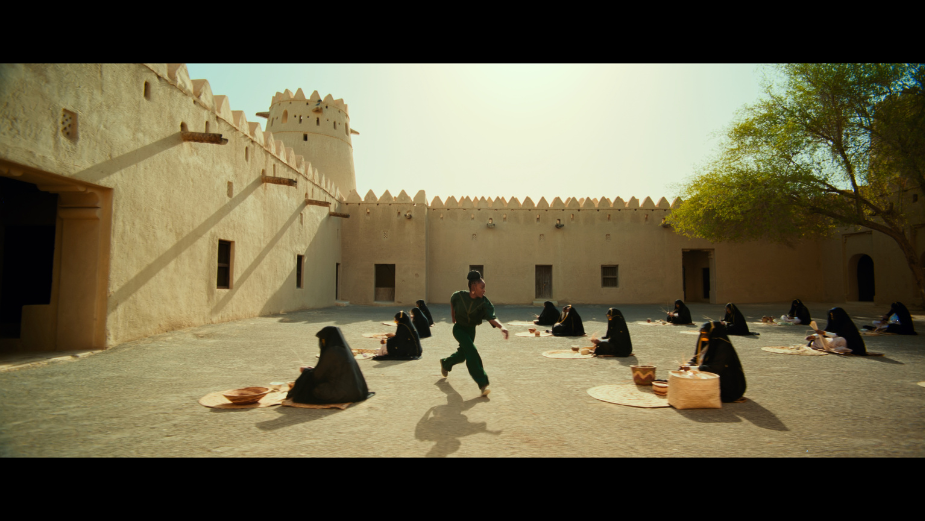
LBB> So Jovan, are you satisfied that your initial ambitions have been met in the finished film?
Jovan> Every project brings me unique joy and satisfaction. This satisfaction is not initially of a creative kind - because a project may drive me mad while in production - and this stems from the simple fact that it intensely occupies my mind for quite a while. The satisfaction comes from friendship with the crew, the creative exchange with my closest collaborators, and living in a new and different place and getting to know it. It’s a joy of filmmaking that exists in these intense moments of production that are very adrenaline and stress-infused. I often compare the process to climbing the peak of a tall mountain that is hard to reach. You and a group of people embark on a dangerous and complicated adventure, and the people around you become close to you. Hence, the journey and its success bring about some deep feelings.
Now that the film is out, and it’s been some time since the actual filming, I’m very happy with it and proud of it.
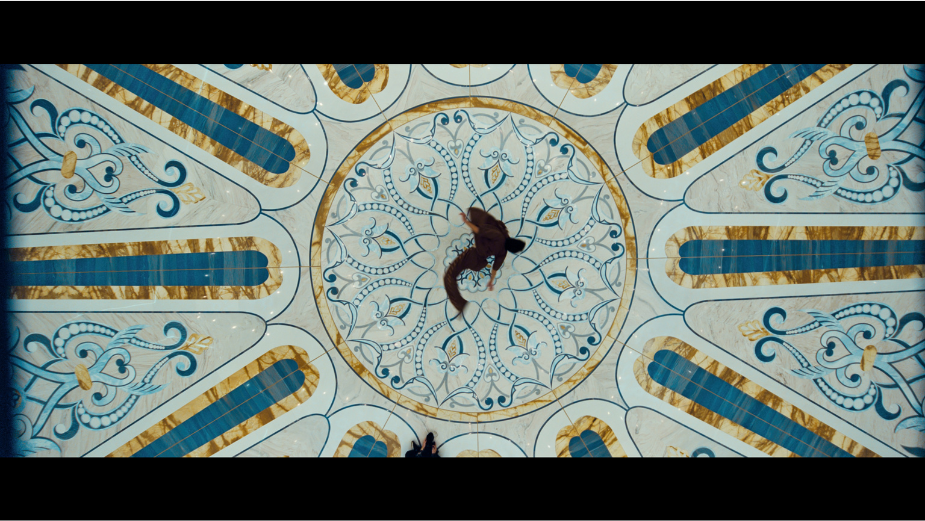
LBB> Why do you all think that 65mm was the right choice for this particular project?
Paul> Just look at the subject matter. Beautiful detail crying out to be seen everywhere, spectacular landscapes, every grain of desert sand, every lush palm frond, every ripple of ocean, wonderful ancient and modern buildings resplendent in intricate patterns and details, people, clothes, huge transitions of light, from burning sun into deep shadows. Only 65mm film can capture all this incredible imagery, which is otherwise lost to lesser formats.
Oliver> That’s right - it was also an amazing choice because of how it united the whole production crew with the confidence that our work was important.
Jovan> 65mm was the only possible choice because it happened. Everything was going against us, and it obviously was not the most practical option. At the same time, this complexity and hardship that we encountered and our overcoming it creatively, technically, and logistically somehow magically infused the film with more emotion, I believe.
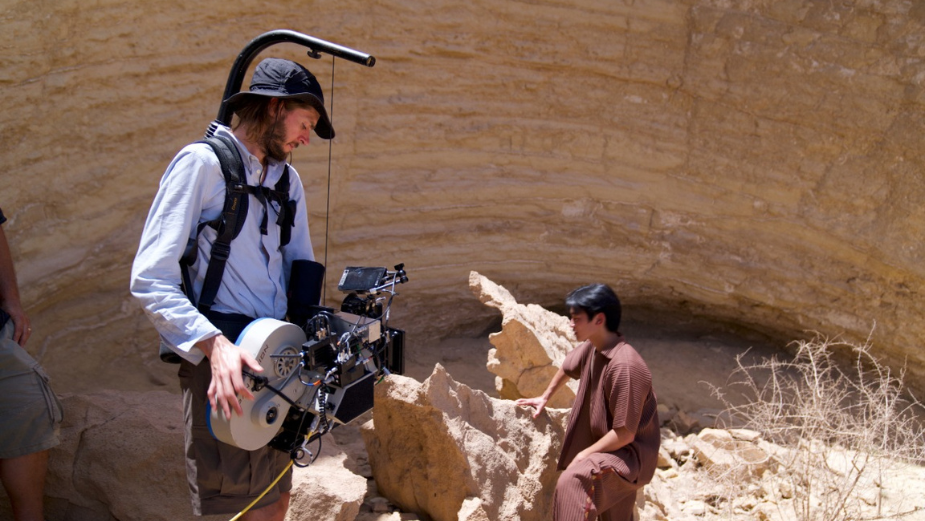
It was the right choice because the culture and history of Abu Dhabi are man-made from the ground up. It’s an impossible feat to create such wonders in very harsh terrain. I feel we needed to relive this historic feat of Abu Dhabi in our own way by shooting on 65mm film. By doing so, we allowed ourselves as filmmakers to identify with what we were filming, and to attain a great respect for everything we framed.
LBB> You mentioned that the legendary ‘Samsara’ documentary inspired your work on this ad. Can you tell us more about how Samsara informed your approach?
Jovan> Yeah, I was inspired by Samsara not only as a filmmaker, but also from an anthropological perspective. Samsara “documented” and “archived” magnificent moments, places, and people in a respectful and human way and captured them with the utmost beauty but in a manner that is simple and rooted in reality. It’s not a first-person-view drone flying all over the place, or a film filled with transitions or post-produced eye candy, but an elevated, timeless visual language.
Oliver> Samsara quite literally informed our final decision on the cameras and lenses we used because they were the same ones. There were a few packages we were looking at renting, each with its own pros and cons. But in the end, when Panavision gave us the option to travel with their System 65 High-Speed bodies, we decided this was the best option. The 65HS bodies are slightly smaller in size than their sound-sync equivalent, so much better for the kind of remote locations and many crane shots we were planning. There’s only one pair in existence at Panavision, the same one that Ron Fricke carried around the world for his film.
LBB> You guys were granted access to some pretty amazing places in order to film this ad. How did you ensure you were making the most out of these spaces - and was there anything about them that you were especially looking to highlight?
Jovan> The locations were hard to get into - especially with all the equipment. To film one of the dancers on a strand of sand in the middle of the sea, we needed to get a giant crane onto a boat that could carry it and then manually hold it in place, waiting for the sea level to reveal the exact spot we planned to film in. In another situation, we needed to get a unique truck that could carry the crane across the desert without getting stuck.
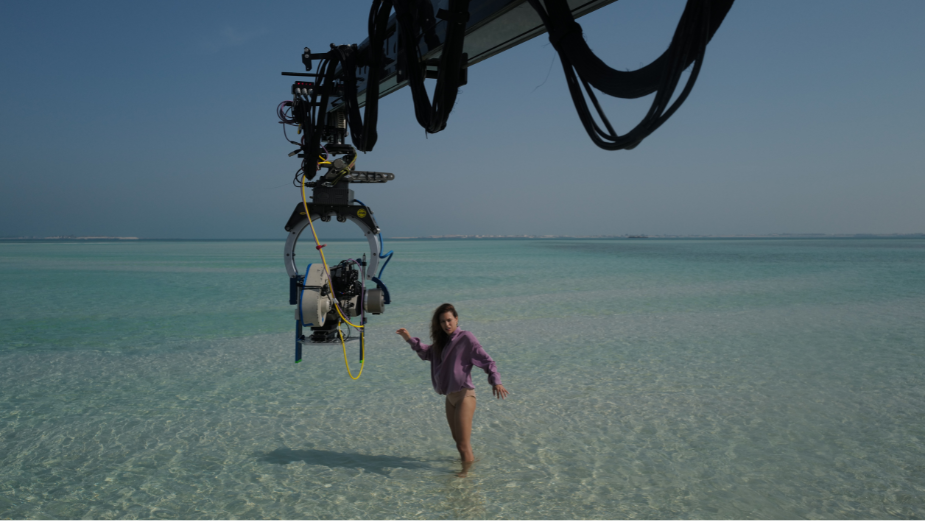
Other locations were difficult to get into from a cultural perspective. Even though we were working for the Department of Culture and Tourism, not all locations are in their direct jurisdiction and some, like the Presidential Palace, had never been filmed. I had to present and convince the management of those buildings of our respectful tonality, visual language, and overall concept before being allowed to film in there.
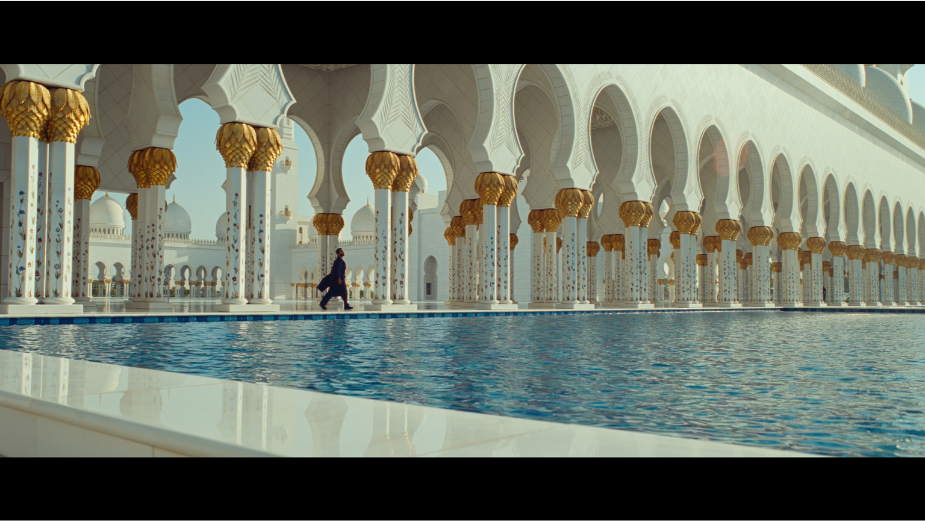
LBB> That’s amazing. Were there any other logistical challenges that you faced?
Oliver> One good challenge for the producers and me was navigating international film shipping. Of course, there are systems for correctly labelling and transporting film to avoid X-ray scanners. Still, many younger people in the shipping and airline industry are no longer aware of the photochemical film’s light-sensitivity. In the end, we did everything correctly, and there was never any risk, but it was still a learning curve for some.
LBB> Broadening this out it feels like, over the past decade or more, the industry has been moving overwhelmingly towards digital - until recently where a trend for traditional film has emerged. Would you agree with that, and what’s driving the trend if so?
Jovan> Traditional film has definitely re-emerged. I only wish that it is used more as a tool to create something, rather than purely another trend that will pass and disappear. Film is just a tool, and shouldn’t be the end goal in and of itself. I notice many young filmmakers who aim to shoot on film. The goal should be something else: to tell a story, relay a feeling, create a message, inspire or confront someone, and film should be one of the tools used to do that.
Oliver> It’s no surprise to me that film is a more desirable medium than ever. When the supply of digital moving images increases, their value tends to decrease, on average. When a medium like film, especially large-format film, is significantly and increasingly rare and expensive, the perceived value of that is incredibly high. That has real effects on a production and on the experience of the audience, just like all forms of art.
Paul> Thankfully, the long running Film vs Digital debate is finally abating. The preoccupation with numbers and specifications has relented, and instead, people are using their eyes to make their creative choices.
The realisation has finally come to be accepted that the formats are just different - film looks like film, and digital looks like digital.
Film encapsulates the art of “Film-Craft”. Filmmakers are by definition craftspeople, so if you’re going to tell a story through a visual medium, why wouldn’t you want to use a format that best captures all the emotions of performance, mood, atmosphere and reality that you worked so hard to create? Only film can achieve this.
With scanner technology advancements, we can now fully unlock the inherent potential that has always been present in film. If you love the look of film (and who doesn’t?), then shoot on film, safe in the knowledge that you are not technically restrained in any way.
Film should be viewed as an integral part of the cinematographers palette. If it fits your project, use it.







